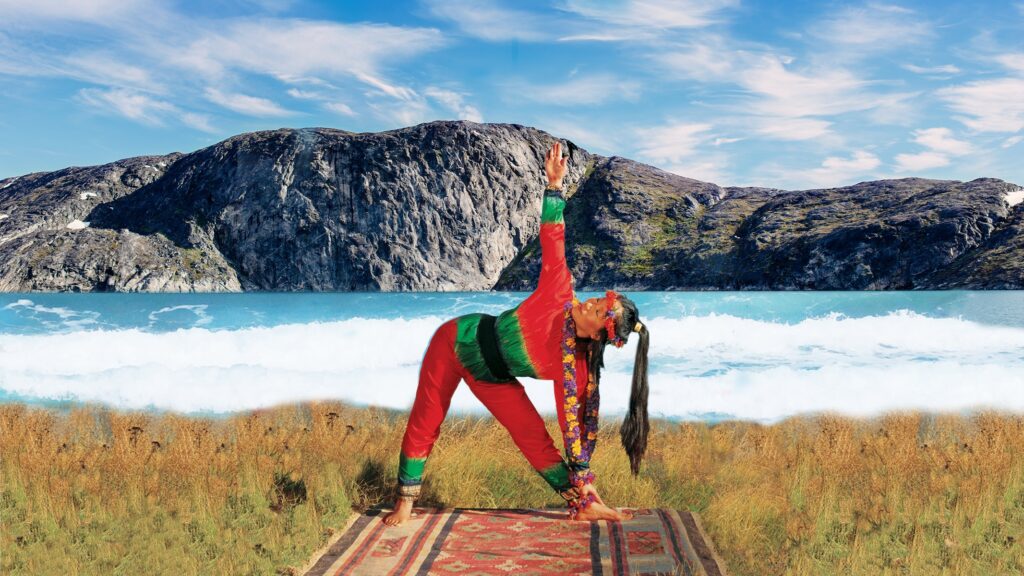If you have trouble balancing or feel top heavy when you practice asanas, it could be that you need a little grounding. For us to experience the steadiness that is part of what the word “asana” means, it’s very helpful to be aware of our body’s connection with the earth. Regardless of whether we’re standing, sitting, kneeling, or lying down, our poses begin from the ground up. So take a few moments before starting each pose to feel your body’s points of contact with the earth.
In standing poses, bending the knees a little, releasing tension from your upper body, and visualizing your weight sinking downward, helps to create a stable base for your pose. Once this base feels strong and steady, you can reach away from it as you move into the pose. In Summit Pose, for example, by pressing your feet and hands firmly into your mat, you can reach your buttocks away from your hands and feet, lengthening both your spine and your hamstrings. In Triangle, feeling your feet firmly anchored enables you to gracefully move into the pose as far as comfortable for you.
You may notice that if you reach beyond your limit in a pose, you lose your grounding. You may become a little shaky or even lose your balance. If that happens, back off the pose a little, coming back to the place where the posture feels steady and stable. Or come out of it all together, get grounded again, then move back into it, being aware of keeping that strong connection to the earth.
In balancing poses, like this week’s Lord of the Dance 1, feeling grounded is especially important. Even in relaxation poses like Savasana or Yoga Nidra, we want to surrender our weight earthward, releasing all tension in the body so that we can take full advantage of the healing benefits of these techniques.



